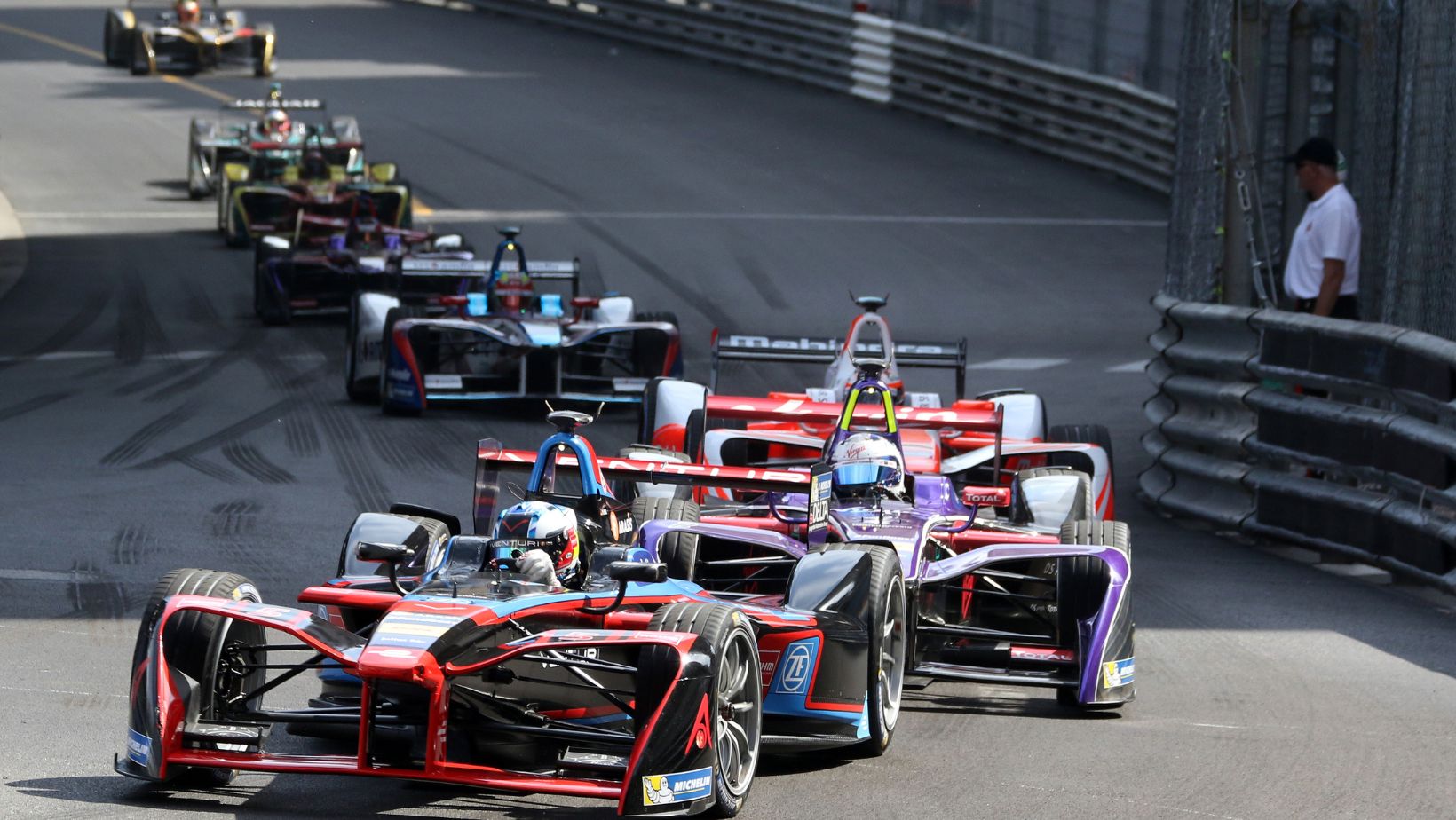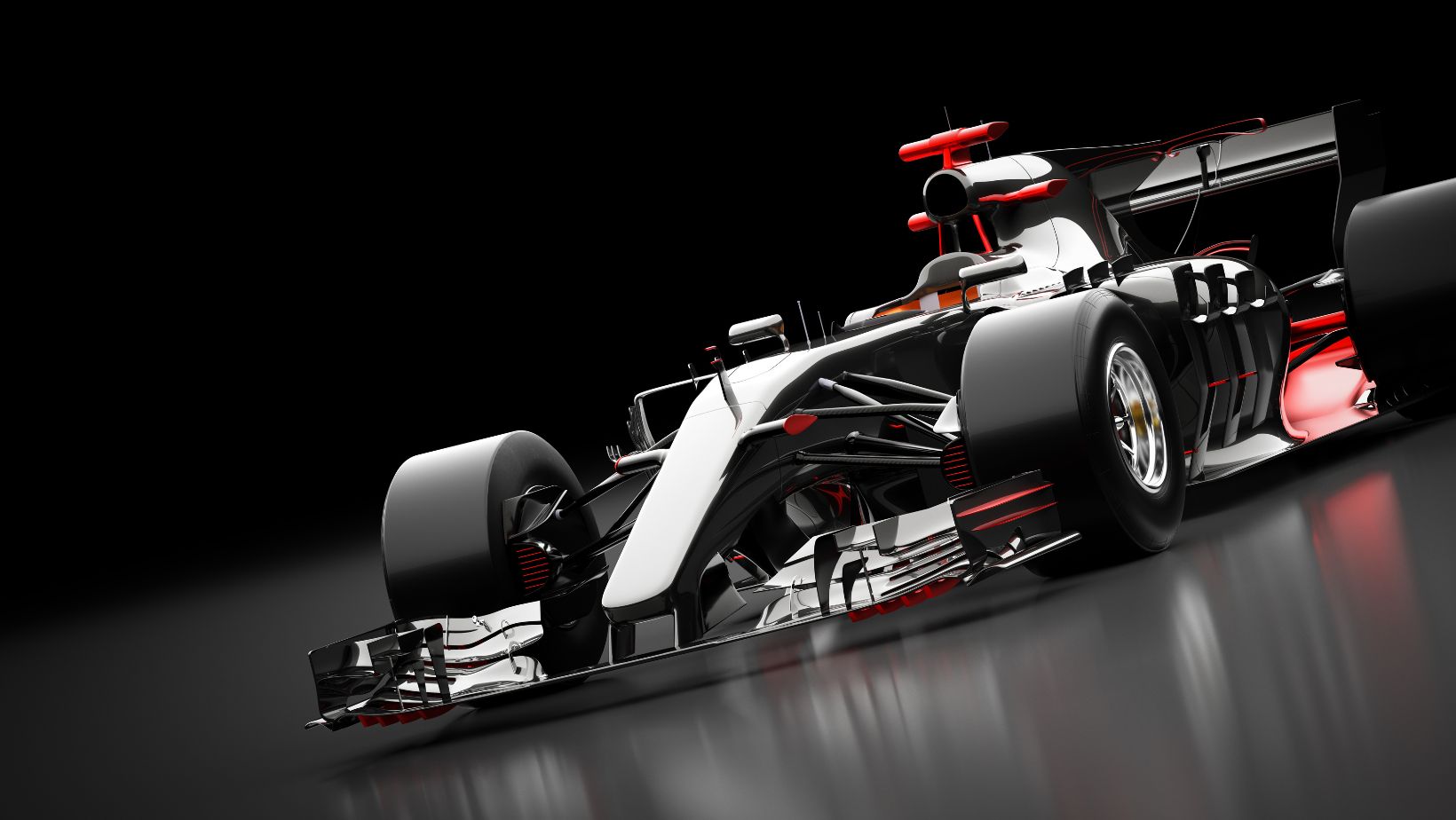As we race into 2025, Formula 1 is not just about speed—it’s about groundbreaking innovation, technological advancements, and an ever-evolving approach to motorsport. From the roar of the engines on a Grand Prix circuit to the fine-tuned aerodynamics of an F1 car, the sport has always pushed the limits. Today, with new rules and emerging technologies, the FIA is reshaping the future of Formula 1. Join Banger Casino Bonus and explores how innovation in areas such as drag reduction systems (DRS), aerodynamic design, and hybrid power units is transforming the sport and propelling the F1 world championship into a new era.
The Evolution of Formula 1: From the Early Days to Modern Machines
For over 75 years, Formula 1 has symbolized the pinnacle of motorsport. What started in 1950 has evolved dramatically, driven by technological breakthroughs and relentless pursuit of speed. The evolution of F1 cars has always been a story of innovation. In the early days, simple designs and basic engineering defined the sport. Today, teams like Red Bull, Ferrari, McLaren, and Williams Racing invest heavily in research and development to reduce drag, optimize downforce, and improve overall engine performance.
Modern F1 cars are marvels of engineering. With advanced aerodynamic features such as intricately designed front wings, rear wings, and ground effect technology, each car is meticulously crafted to cut through the air. These innovations not only help reduce drag but also maximize downforce, enabling drivers to push their limits on every circuit.
Key Technological Advancements in 2025
Aerodynamics and the Drag Reduction System (DRS)
One of the most influential innovations in recent years is the Drag Reduction System, or DRS. This technology, which allows drivers to adjust their rear wing during races, has revolutionized overtaking maneuvers. In 2025, teams continue to refine DRS technology to optimize straight-line speed while ensuring the overall balance of the car. By reducing drag at critical moments, drivers can gain precious fractions of a second—sometimes even within one second—making all the difference in a race.
Advanced aerodynamics go beyond DRS. Teams analyze data on every curve of a circuit to fine-tune elements such as the front wing and side pods. The goal is to create a design that provides maximum efficiency on both high-speed straights and tight corners. With real-time data analytics and wind tunnel testing, modern F1 teams can simulate conditions and adjust their designs to achieve faster lap times and improved overall performance.
Hybrid Power Units and Engine Performance
The engine is the beating heart of an F1 car, and in 2025, hybrid power units are more advanced than ever. These systems combine traditional internal combustion engines with electric motors, delivering a powerful yet efficient performance. The integration of renewable energy principles has also driven innovation in power unit design, aligning the sport with a sustainable future. Teams leverage AI and data analytics to optimize fuel usage and boost efficiency, all while ensuring that engine performance remains at the cutting edge.
The evolution of the hybrid system not only contributes to faster lap times but also plays a critical role in the overall strategy during a race weekend. As F1 teams analyze data from practice sessions and qualifying, they make critical adjustments that can influence race outcomes. This data-driven approach to engine performance is a cornerstone of modern Formula 1, ensuring that every component works in harmony.
The Role of AI and Data Analytics
Data is at the core of modern F1 innovation. AI-driven analytics enable teams to monitor every aspect of a car’s performance—from tyre degradation and fuel consumption to aerodynamic efficiency and driver input. These insights allow teams to make real-time adjustments during a race, improving strategy and potentially securing a win.
For example, by analyzing data collected during practice sessions, engineers can determine the optimal tyre compounds for a particular circuit. AI can also simulate various race scenarios, helping teams decide on pit stop strategies and the best use of DRS. This reliance on data to make informed decisions has not only changed race strategy but also revolutionized how teams approach car design and development.
Global Expansion and the Future of Formula 1
Increasing International Influence
While the NBA and global sports leagues often dominate headlines, Formula 1 is expanding its global reach in a significant way. The inclusion of international players, the global broadcasting of races, and events such as the NBA Paris Games have all contributed to the globalization of F1. With races held across continents—from the iconic circuits in Europe and North America to new venues in Asia and Africa—the sport has become a truly global phenomenon.

The F1 calendar now features events that attract diverse audiences, and this international exposure has brought new fans to the sport. Global outreach initiatives are a key focus for the FIA and Formula 1 teams alike. By partnering with international sponsors and leveraging social media, the sport is connecting with fans worldwide, further cementing its status as a premier motorsport.
Expanding the Fan Experience with Immersive Technologies
The experience of watching an F1 race is evolving too. Thanks to virtual reality (VR) and augmented reality (AR), fans can immerse themselves in the world of Formula 1 like never before. Imagine donning a VR headset to experience the sensation of being inside the cockpit or watching real-time telemetry data overlaying the live broadcast of an F1 grand prix. These advancements are transforming the way fans engage with the sport, making every race a more interactive and exciting event.
Streaming services and digital platforms provide high-definition coverage of every race, offering multiple viewing angles, behind-the-scenes access, and in-depth analysis from experts. As these technologies evolve, the line between the on-track action and the fan experience continues to blur, drawing new audiences and keeping long-time supporters engaged.
The Future of the Sport: Sustainability and Technological Innovation
Looking ahead, the future of Formula 1 is poised to be defined by sustainability and technological innovation. As global concerns over climate change and resource management grow, the sport is taking steps toward a more sustainable future. This includes the development of more energy-efficient power units, the use of renewable energy sources, and initiatives aimed at reducing the environmental impact of race events.
F1 teams are also exploring cutting-edge technologies such as quantum computing and advanced materials science to further enhance performance while minimizing energy consumption. The commitment to sustainability is not only a response to regulatory pressures but also a strategic move to attract new fans who value environmental responsibility.
The Competitive Edge: Teams and Drivers Pushing the Limits
Dominance of Leading Teams
The 2025 season has seen fierce competition among top teams like Red Bull, Ferrari, McLaren, and Williams Racing. Each team continually refines its strategies and technological innovations to gain a competitive edge. For example, Red Bull’s focus on aerodynamic efficiency and innovative use of DRS has made them a formidable force on the track, while Ferrari’s commitment to optimizing their power unit has kept them at the forefront of engine performance.
The race for the Formula One World Championship is as much about technology as it is about driver skill. Teams invest in state-of-the-art research and development, and every element of the car—from the front wing to the rear wing—is scrutinized to push the limits of performance.
The Role of Iconic Drivers
Iconic drivers such as Lewis Hamilton and Max Verstappen have become synonymous with modern F1, combining extraordinary talent with an analytical approach to racing. These drivers, backed by meticulous data analysis and strategic insights, continue to redefine what it means to compete at the highest level. Their ability to adapt to rapidly changing race conditions—using insights from AI-driven data and real-time telemetry—illustrates the evolution of the sport.

Rising stars in the sport also reflect the global nature of modern Formula 1. With talent emerging from every corner of the globe, the diversity of the driver roster is a testament to the sport’s international appeal and continued expansion.
The Business and Cultural Impact of Modern Formula 1
Shaping the Future of Motorsport
The impact of innovation in Formula 1 extends beyond the racetrack. The technological advancements and sustainable practices pioneered in F1 often trickle down to consumer automotive technology, influencing how cars are designed and manufactured for the general public. This cross-pollination of ideas between high-performance motorsport and everyday vehicles helps drive broader technological innovation in the automotive industry.
Moreover, F1 serves as a global business platform, attracting investments from major sponsors and brands. The sport’s worldwide viewership, enhanced by digital platforms and social media, creates significant revenue opportunities and reinforces the global status of the FIA and its commitment to pushing the boundaries of racing.
Cultural and Fan Engagement
The allure of Formula 1 goes beyond speed and technology—it’s a cultural phenomenon. The spectacle of a Grand Prix, with its roar of engines, dramatic pit stops, and nail-biting finishes, continues to captivate fans. The integration of advanced broadcasting technologies, immersive digital experiences, and behind-the-scenes access has transformed how fans consume the sport.
F1’s global events not only highlight the technical excellence of the sport but also celebrate its rich heritage and cultural significance. The legacy of 75 years of speed is evident in every race, inspiring a new generation of enthusiasts and ensuring that the spirit of competition lives on.
Conclusion: Pushing the Limits of Innovation and Speed
The world of Formula 1 in 2025 is a dynamic blend of cutting-edge technology, strategic innovation, and raw human talent. From the evolution of F1 car design and advanced aerodynamics to the integration of AI and real-time data analytics, every aspect of the sport is being redefined to push the limits of speed and performance.
As F1 teams compete on the global stage, the sport continues to expand its reach beyond traditional boundaries, attracting international talent and captivating audiences worldwide. The advancements in sustainable practices, hybrid power units, and immersive fan experiences not only promise to transform the racing landscape but also set new standards for motorsport globally.
The competitive spirit of Formula 1 is embodied by legendary drivers and innovative teams that relentlessly strive for excellence. With a focus on reducing drag through technologies like DRS, optimizing power units, and enhancing aerodynamics, the 2025 F1 season is shaping up to be one of the most exciting chapters in the sport’s storied history.
For fans, the thrill of watching a race—whether in the stadium, on television, or through immersive digital platforms—remains unparalleled. The blend of tradition and innovation, coupled with a commitment to sustainability and technological progress, ensures that Formula 1 will continue to be a beacon of excellence in motorsport for years to come.
As we look to the future, one thing is clear: Formula 1 is not just a sport—it is a celebration of innovation, speed, and the relentless pursuit of perfection. So, buckle up and get ready for a season where every lap, every pit stop, and every split-second decision pushes the boundaries of what is possible on the racetrack.

